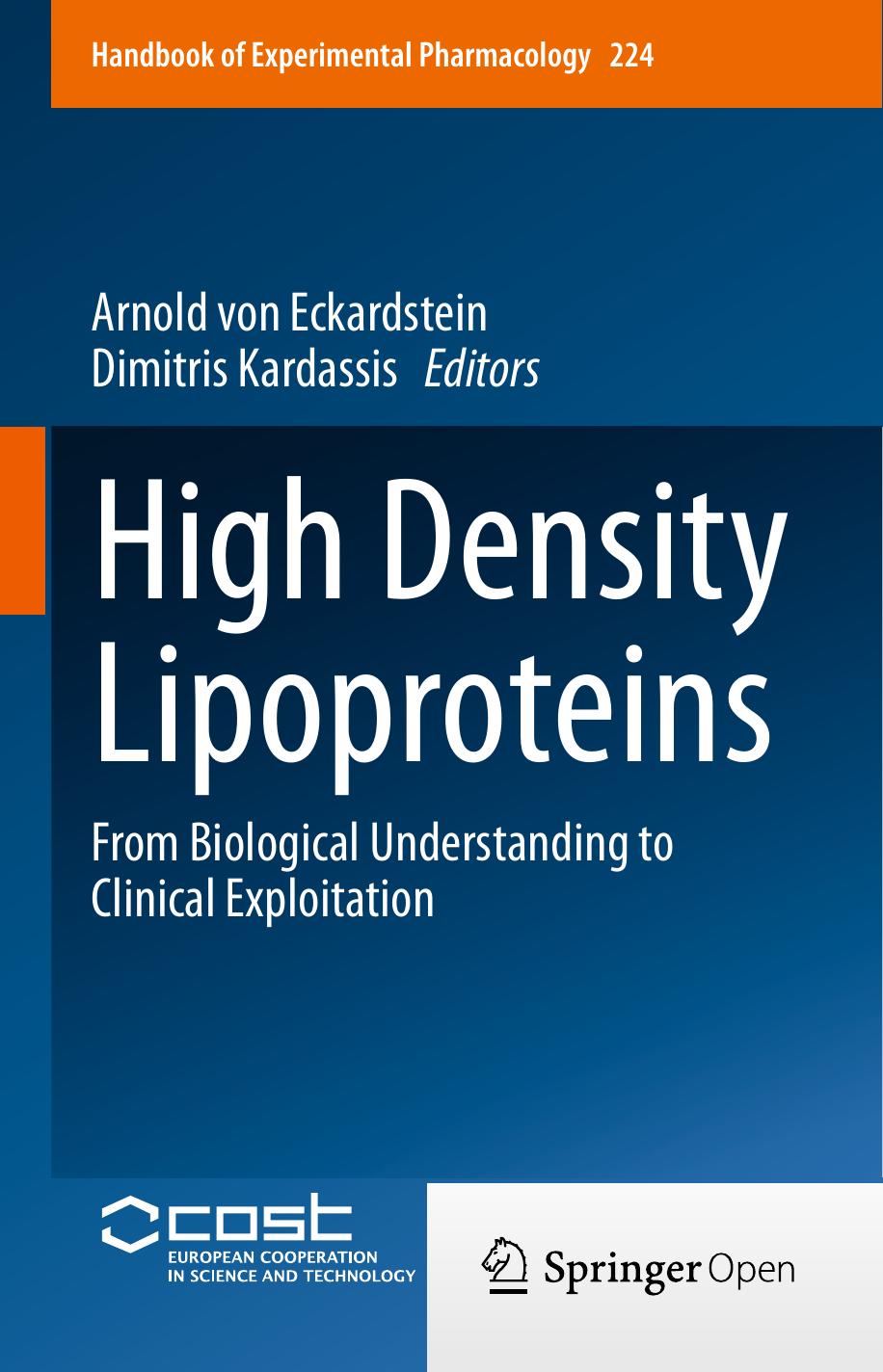High Density Lipoproteins by Arnold von Eckardstein & Dimitris Kardassis

Author:Arnold von Eckardstein & Dimitris Kardassis
Language: eng
Format: epub, pdf
Publisher: Springer International Publishing, Cham
5.2 Impaired Endothelial Anti-Inflammatory Effects of HDL in Patients with CAD, Diabetes, or Chronic Kidney Dysfunction
HDL isolated from patients with inflammatory disease such as CAD, diabetes, or chronic kidney disease display reduced eNOS activation and impaired endothelial repair capacity in a carotid artery injury mouse model. There have been various mechanisms proposed to account for the impaired endothelial anti-inflammatory effects of HDL. Reduced HDL apoA-I levels in inflammatory states has been related to accelerated HDL catabolism and apoA-I substitution in HDL particles by serum amyloid A (SAA) (Esteve et al. 2005; Khovidhunkit et al. 2004). In acute phase, SAA is able to replace apoA-I in HDL, resulting in reduced plasma levels of apoA-I (Parks and Rudel 1985). ApoA-I can be completely replaced by SAA in rabbits and mice, in a subset of small, dense HDL particles and therefore functioning as a structural apolipoprotein (Cabana et al. 1999). HDL isolated from patients with chronic kidney disease is enriched in SAA, which correlated with its reduced anti-inflammatory capacity to inhibit monocyte chemoattractant protein-1 formation in vascular smooth muscle cells (Tolle et al. 2012).
Moreover, HDL carries potential cardioprotective molecules that are significantly altered in compositions in patients with CAD or ACS (Riwanto et al. 2013; Vaisar et al. 2007). Oxidative modifications of HDL, in particular the amino acid residues in apoA-I, have been shown to contribute to the generation of dysfunctional HDL (Bergt et al. 2004; Shao et al. 2006, 2012; Zheng et al. 2004). In vitro study has demonstrated that MPO-catalyzed oxidative modification of HDL or apoA-I converts HDL into a proinflammatory particle which promotes NF-κB activation and endothelial VCAM-1 expression (Undurti et al. 2009). Furthermore, glycation of HDL and apoA-I, a process that is known to occur in diabetes in vivo (Curtiss and Witztum 1985), has been shown to impair the anti-inflammatory capacity of HDL (Nobecourt et al. 2010). Infusion of glycated lipid-free apoA-I failed to decrease adhesion molecule expression following vascular injury (Nobecourt et al. 2010). Moreover, glycation of HDL has also been shown to inhibit the HDL capacity to inhibit oxLDL-induced monocyte adhesion to human aortic endothelial cells in vitro (Hedrick et al. 2000).
Download
High Density Lipoproteins by Arnold von Eckardstein & Dimitris Kardassis.pdf
This site does not store any files on its server. We only index and link to content provided by other sites. Please contact the content providers to delete copyright contents if any and email us, we'll remove relevant links or contents immediately.
| Administration & Medicine Economics | Allied Health Professions |
| Basic Sciences | Dentistry |
| History | Medical Informatics |
| Medicine | Nursing |
| Pharmacology | Psychology |
| Research | Veterinary Medicine |
Tuesdays with Morrie by Mitch Albom(4690)
Yoga Anatomy by Kaminoff Leslie(4305)
Science and Development of Muscle Hypertrophy by Brad Schoenfeld(4086)
Bodyweight Strength Training: 12 Weeks to Build Muscle and Burn Fat by Jay Cardiello(3913)
Introduction to Kinesiology by Shirl J. Hoffman(3725)
How Music Works by David Byrne(3186)
Sapiens and Homo Deus by Yuval Noah Harari(2987)
The Plant Paradox by Dr. Steven R. Gundry M.D(2547)
Churchill by Paul Johnson(2506)
Insomniac City by Bill Hayes(2496)
Coroner's Journal by Louis Cataldie(2432)
Hashimoto's Protocol by Izabella Wentz PharmD(2331)
The Chimp Paradox by Peters Dr Steve(2296)
The Universe Inside You by Brian Clegg(2097)
Don't Look Behind You by Lois Duncan(2078)
The Immune System Recovery Plan by Susan Blum(2027)
The Hot Zone by Richard Preston(1983)
Endure by Alex Hutchinson(1963)
Woman: An Intimate Geography by Natalie Angier(1882)
